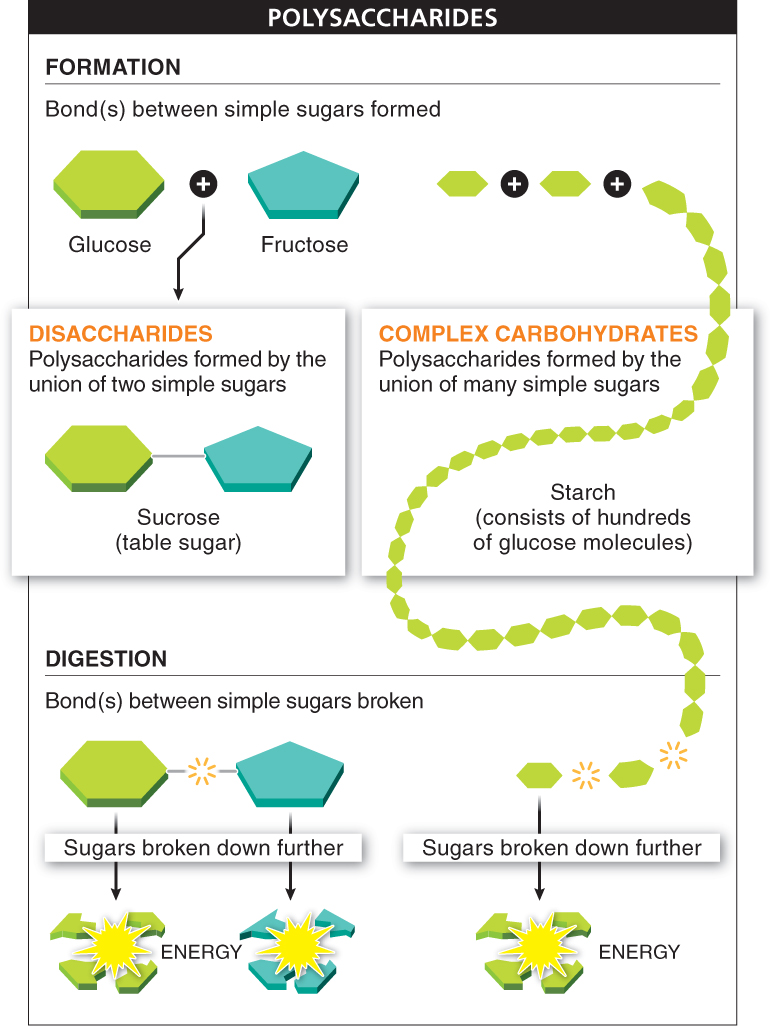In contrast to the simple sugars, some carbohydrates contain more than one sugar unit or building block. When two simple sugars are bonded together they form a disaccharide; the joining of glucose and galactose, for example, makes the disaccharide lactose, which is the sugar found in milk. Much larger numbers of simple sugars may be joined together—

Like simple sugars, many disaccharides and polysaccharides are important sources of fuel for cells. Unlike simple sugars, however, disaccharides and polysaccharides must undergo some preliminary processing before the energy can be released from their bonds. Let’s look at what happens when we eat sucrose, common table sugar. Sucrose is the primary carbohydrate in plant sap and is composed of two simple sugars, glucose and fructose, linked together. To use sucrose, the body must first break the bond linking the glucose and fructose. Only then can the individual monosaccharides be broken down into their component atoms and the energy that was stored in their chemical bonds be harvested and used.
In plants, the primary form of energy storage is a complex carbohydrate called starch, found in roots and other tissues (see Figure 2-
Many complex carbohydrates are like “time-
Before heading to the library for a long study session, students would be wise to consume oatmeal rather than fresh fruits. Why?
The relative amounts of complex carbohydrates and simple sugars in foods cause them to have different effects when you eat them. Oatmeal (along with rice and pasta), for example, is rich in complex carbohydrates. Fresh fruits, on the other hand, are rich in simple sugars, such as fructose. Consequently, although fruit will give a quick burst of energy as the sugars are almost immediately available, the fuel will soon be gone from the bloodstream. Simple sugars in the oatmeal will become available only gradually, as the complex carbohydrates of the oats are broken down into their simple sugar components (FIGURE 2-25).

59
TAKE-HOME MESSAGE 2.10
Multiple simple carbohydrates are sometimes linked together into more complex carbohydrates. Types of complex carbohydrates include starch, which is the primary form of energy storage in plants, and glycogen, which is a primary form of energy storage in animals.
Starch and glucose are both carbohydrates. So why does starch fail to provide you the quick burst of energy that glucose can provide?
Starch is a more complex carbohydrate, consisting of hundreds or more sugar molecules covalently linked together. You cannot directly use starch; your body must first break the covalent bonds connecting these sugar molecules, and this takes time.